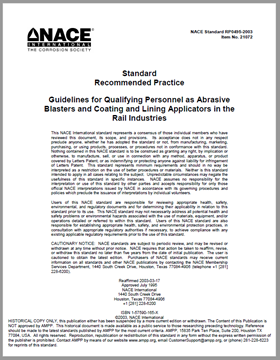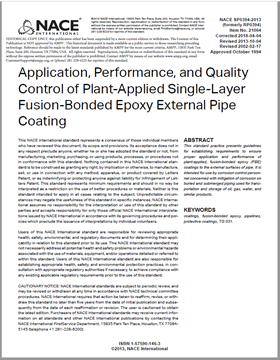Mineral scale may be defined as an adherent deposit of predominantly inorganic compounds. A common process leading to scale formation is the precipitation of sparingly soluble salts from oilfield brines. Some oilfield brines contain sufficient sulfate ion in the presence of barium and/or strontium ions that the potential for forming barium sulfate (BaS04) and/or strontium sulfate (SrS04) scale exists. Often the formation of scale results in reduced production and increased maintenance costs. In some locations, naturally occurring radioactive materials have been found to incorporate themselves into the scale. This complication may result in significant health, safety, and liability concerns and increased scale disposal costs. Removal of scale after it has formed is particularly difficult when BaSQ4 and SrSQ4 are involved. Therefore, oil and gas producers most often use treatment chemicals to inhibit formation of these scales and reduce their tendency to adhere to surfaces. The choice of the best scale inhibitor for a given application often follows a lengthy testing program. The program typically begins with the collection of potentially useful products that are then put through a screening process in the laboratory to determine whether specific products or classes of products perform better than others.
NACE Standard TM0374addresses only the screening of inhibitors of CaS04 and CaC03 scales. By contrast, this standard test method is intended to provide the user with a relative and quantitative measure of the ability of scale inhibitors to prevent (1) the formation and (2) the precipitation of solid BaS04 and/or SrS04, which are necessary and critical stages in scale deposition. This standard is intended for use by skilled laboratory personnel who have previously carried out similar tests. The laboratory screening procedure described in this standard may not allow for the simulation of all oilfield system variables. It must be regarded only as a starting point in the evaluation of scale inhibitors. The procedure standardizes the collection of screening test results to facilitate discussion of the results by interested parties. No attempt has been made to define the test brine composition, test temperature, or test duration. Users of this standard must agree on these and other critical parameters to facilitate comparison of test results.
This standard was prepared by Work Group T-1D-36a, a subgroup of T-10-36 on Scale
Inhibitor Evaluation in Oil and Gas Production, a component of Unit Committee T-10 on
Corrosion Monitoring and Control of Corrosion Environments in Petroleum Operations, and is issued by NACE International under the auspices of Group Committee T-1 on Corrosion Control in Petroleum Production.
This standard describes a test method to screen scale inhibitors for their ability to prevent precipitation of BaSO4 and/or SrSO4 from oilfield brines. The test method does not fix such critical variables as test brine composition, test temperature, and test duration. It is the responsibility of the user of this standard to determine the most appropriate choices for these parameters. For example, NACE International CORROSION/92 paper no. 92013 addresses static tests using North Sea brines.
Historical Document 1997




